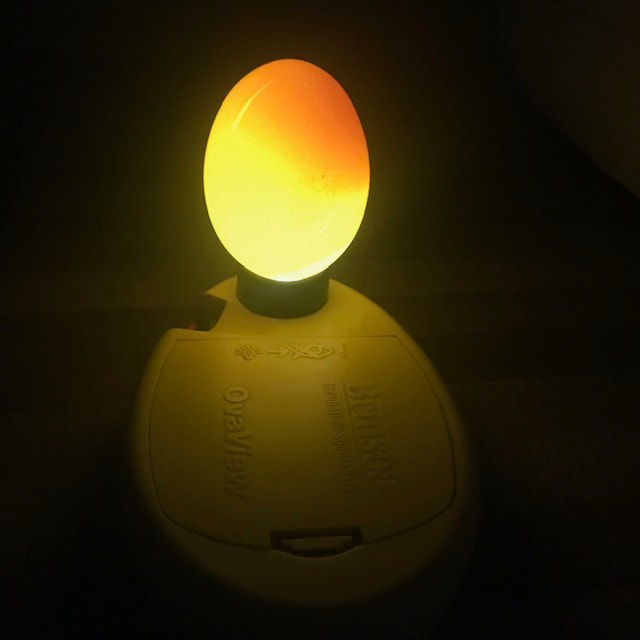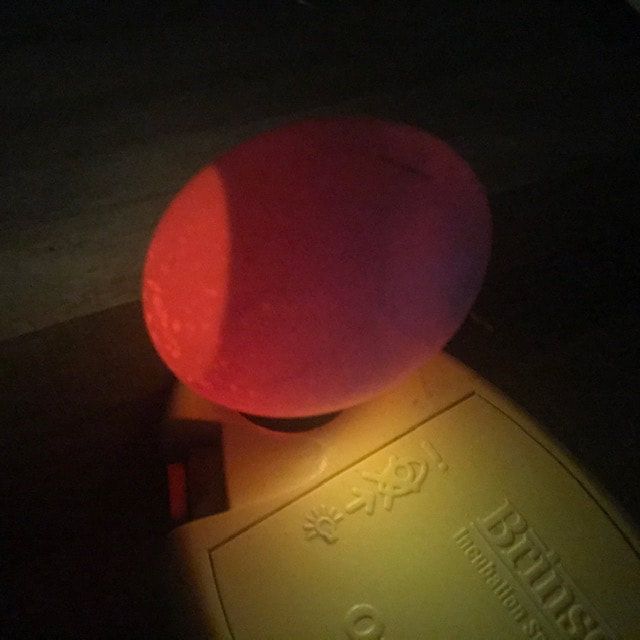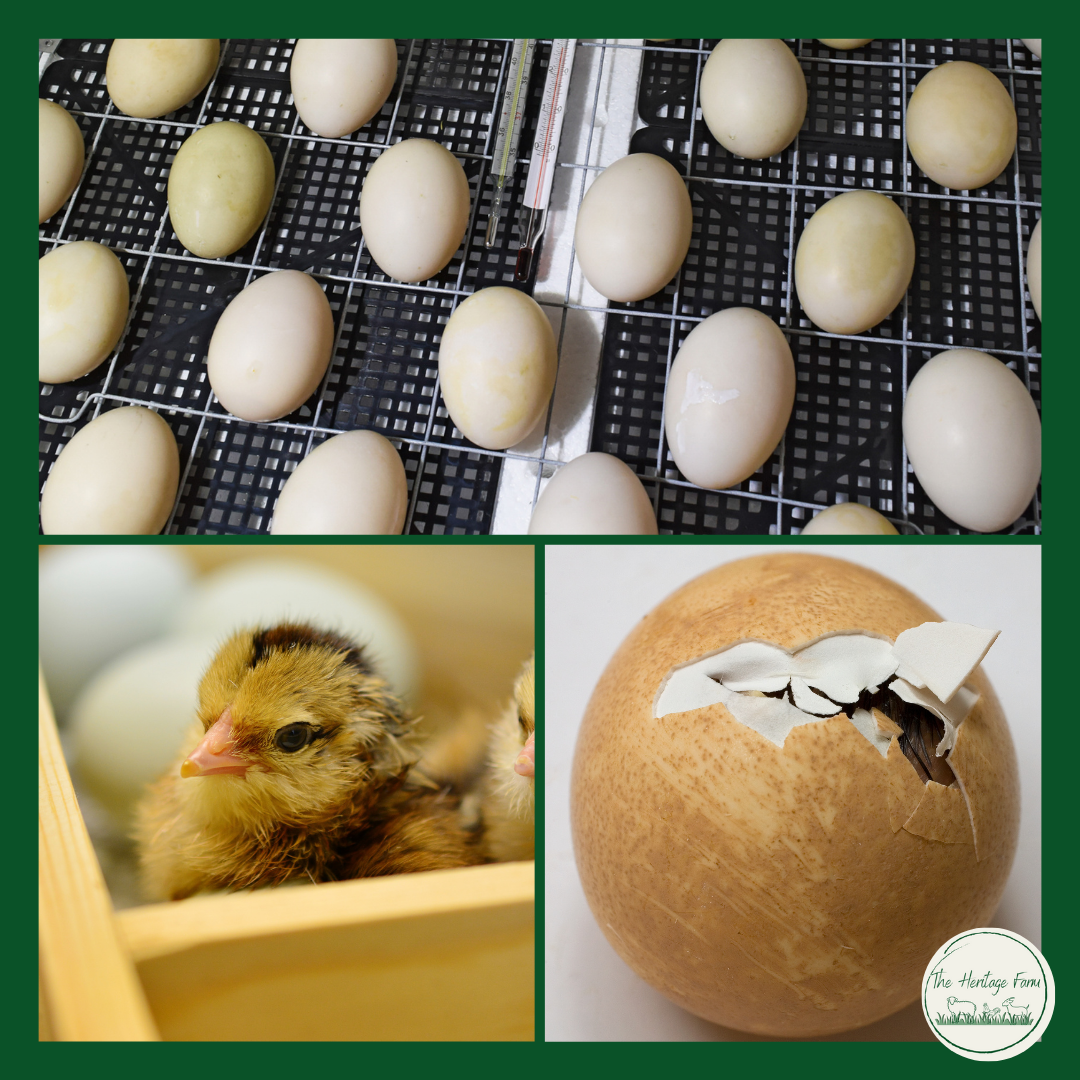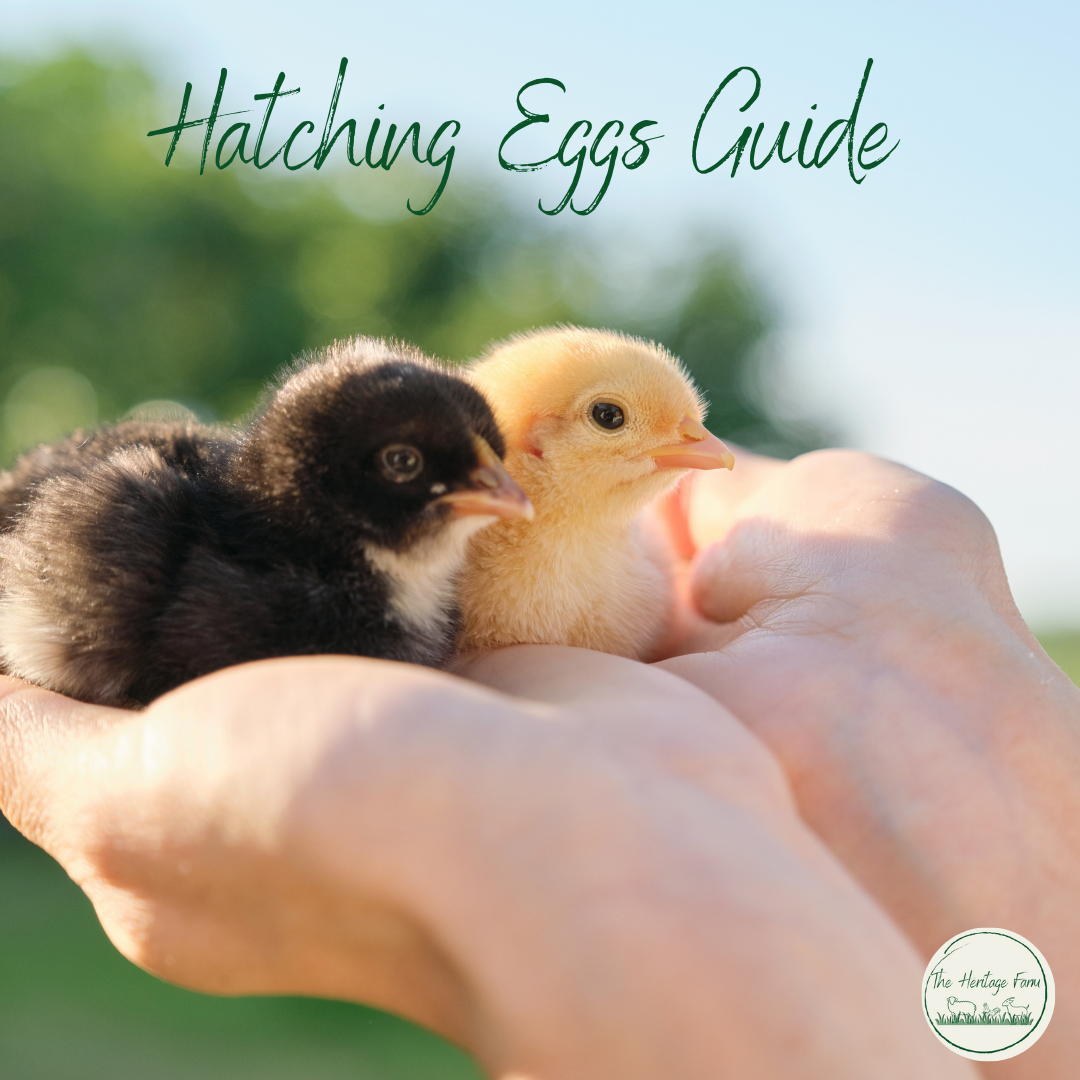What is Candling?It is time to candle the eggs! Candling is the act of shining a strong light through the egg to establish fertility, and general embryo development. If you have chosen to candle the eggs, then the optimal time to do it to test fertility is between days 7 and 10. Ideally use a specialised candling light, and always candle in a darkened room to have the best chance of seeing inside the shell. To successfully hatch out chicks you do not need to candle eggs. Especially if you are new to hatching, then you may want to wait until you have a few hatchings under your belt before you take on this new skill! However when done correctly, candling can help sort the fertile from the non-fertile eggs, and it manages your expectations regarding the number of chicks you can hope to expect. How to Candle an eggIdeally, use a specialised candling light, and always candle in a darkened room to have the best chance of seeing inside the shell.
You will likely see three different options.
If you notice broken or leaking eggs, remove them from the incubator as they are not likely to be viable and may contaminate the incubator. After candling, return eggs to the incubator and return to the day 1-18 turning schedule. With candling it is important to be careful and quick. An incubated egg cannot be away from its optimal temperature and humidity for more than a few minutes. If it is, then you could potentially turn a fertile and viable egg into one that stops developing from that point. If you have a large number of eggs to candle, it may be better to do a few eggs at a time.
0 Comments
Thank you for your purchase of The Heritage Farms hatching eggs! We hope that you have the optimal hatching rate success with our eggs so we have put together this step by step guide to help!
Steps to take when your eggs arrive.
We hope this helps you and guides you through out the hatching process! It can be daunting if this is your first hatching attempt but when the chicks start to hatch it is completely worth all the work! Happy hatching!!! Thinking of purchasing some fertilised eggs to hatch out your own chicks? At the Heritage Farm, we want you to have the highest chance of success with your hatchings as possible. That is why we have created this short guide which should hopefully help you maximise your chances of a successful hatch.
What is a successful hatch rate? Typically, people that get a 50% hatch rate will often call that a success. More than 50% is considered a bonus! Although the eggs must be fertile to start with, you control many factors that will either contribute to a successful hatch or will negatively impact your hatchings. What do you need to have for a good hatch rate?
3 Steps to a simple - Multi purpose Cleaner!
Many people often ask about what we use in our DIY multi purpose cleaner so I thought I would do a simple video... The recipe is...
What do you need to do?
Disclaimer - we don’t have an affiliation with the brand of dish soap we used .. that was just the brand we had in our cupboard! The bottles were bought on amazon. These come in a set of three colours, orange, green and blue. They are 500ml. I liked the fact that I could easily use a different coloured bottle for a different cleaning solution and would not need to label my bottles. For me, the green is multi-purpose. Link below if you would like to check out the bottles on amazon. This is an affiliate link. https://amzn.to/3egTouS The essential oil comes from a range at @lifestyletoniq Lifestyle Toniq 100% Pure and Natural Lemon Essential Oil 10ml. - Lifestyle Toniq |
Categories
All
Archives |













